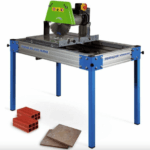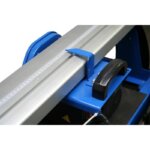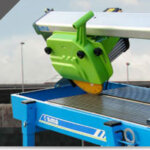If you’re wondering how to cut brick effectively, a reciprocating saw —also known as a Sawzall— can be a powerful and versatile tool when paired with the right blade. With the correct brick cutting blade for a reciprocating saw, you can tackle a variety of masonry projects like cutting brick, concrete, clay tile, terracotta, and more.
Contents
Choosing the right masonry reciprocating saw blade
Before cutting, it’s essential to buy a reciprocating saw masonry blade that matches both your saw model and the material you’ll be working on. Here’s a quick guide:
- For cutting brick or concrete: Use a tungsten carbide grit blade or a diamond reciprocating saw blade for concrete. These are ideal for hand masonry materials.
- For wood with nails: A bimetal blade is your best bet —it lasts longer and handles impact better.
- For clean cuts in wood: Use a high-carbon steel blade with a specific tooth pattern.
- For metal: Choose a metal cutting or diamond blade.
- For ceramic tiles or cement board: Blades with tungsten carbide powder also work well.
If you are asking, ‘Can you cut brick with a reciprocating saw?’ The answer is yes —as long as you use the appropriate masonry reciprocating saw blade.
Key blade features for cutting brick and masonry
1. Toot Spacing (TPI – Teeth Per Inch)
- Fewer teeth per inch = faster cuts, rougher finish (good for wood).
- More teeth per inch = slower, cleaner cuts (better for a metal and delicate materials).
- Tip: Ensure at least three teeth are in contact with the material to prevent snagging.
2. Blade Length and Width
- Longer blades (up to 12 inches): Deeper cuts, ideal for larger blocks or bricks.
- Short blades: Better for plunge cuts and precision work.
- Wider and thicker blades: Offer more stability and reduce wobble during tough cuts.
Need a reciprocating saw blade for concrete block or Sawzall masonry blades for your project? Match blade length and thickness to the job for better performance.
6 easy steps: How to change a masonry reciprocating saw blade
Replacing a worn-out masonry saw blade for a reciprocating saw is quick and simple:
- Wear safety gear: Always use gloves and protective goggles.
- Disconnect the saw: Unplug it or remove the battery (for cordless models).
- Position the saw safely: Point the blade away from your body.
- Locate the locking collar: This ring secures the blade at the saw’s base.
- Twist and release: Pull the collar inward and turn it counterclockwise to release the blade.
- Insert the new blade: Slide it into position and twist the collar clockwise until it clicks securely.
Whether you’re replacing a worn blade or upgrading to a concrete cutting reciprocating saw blade, always make sure it’s compatible with your tool.
Final tip: Can you sharpen reciprocating saw blades?
Most reciprocating saw blades for brick and concrete are not designed to be sharpened. Instead, consider replacing them with fresh, durable options like diamond reciprocating saw blades or masonry Sawzall blades for optimal performance.
Ready to start cutting bricks?
Make your next project smoother with the right brick saw and reciprocating saw blades for masonry. Whether you are cutting concrete, brick, or cement panels, using the correct Sawzall concrete blade will save time and ensure a clean finish. Don’t forget to check all the options that we offer you at SIMA and take advantage of the international delivery and return.





